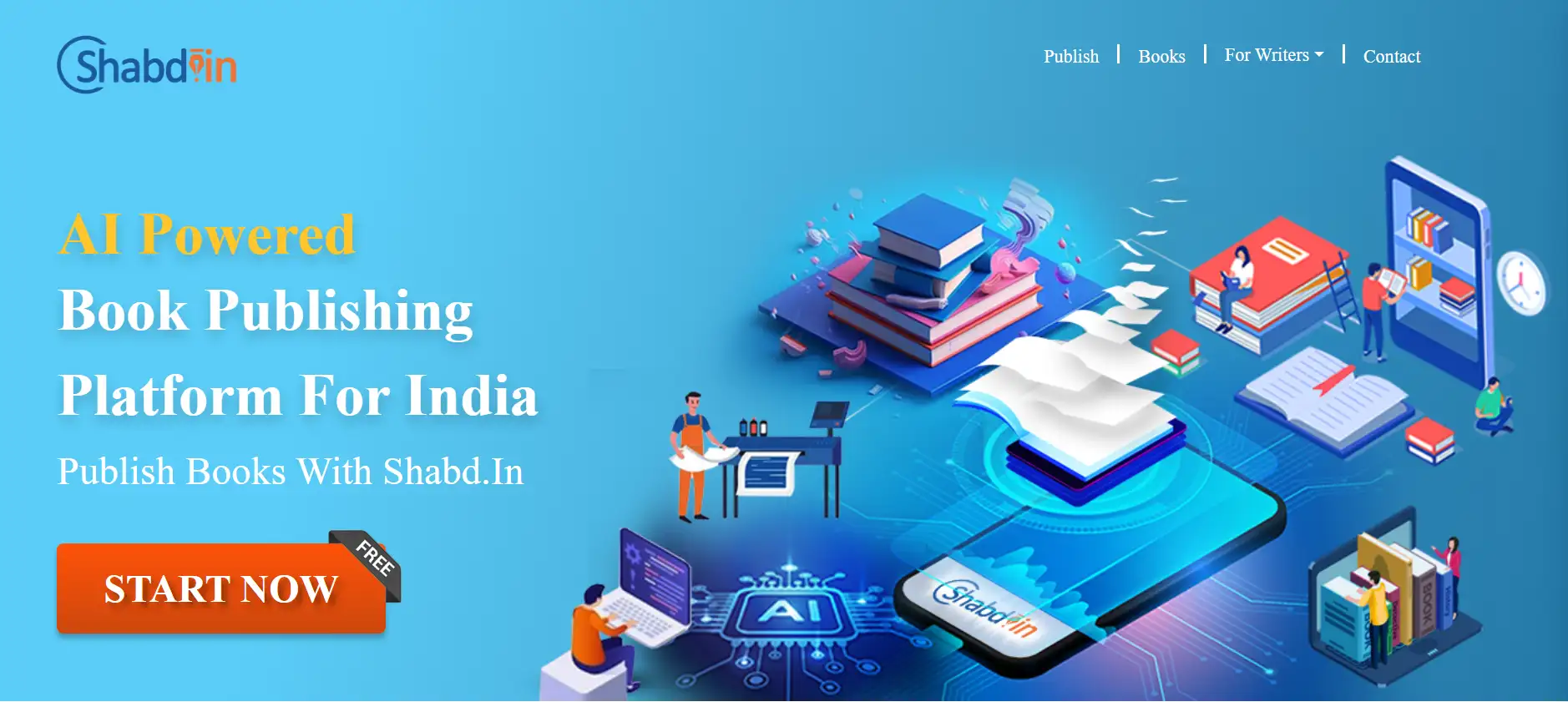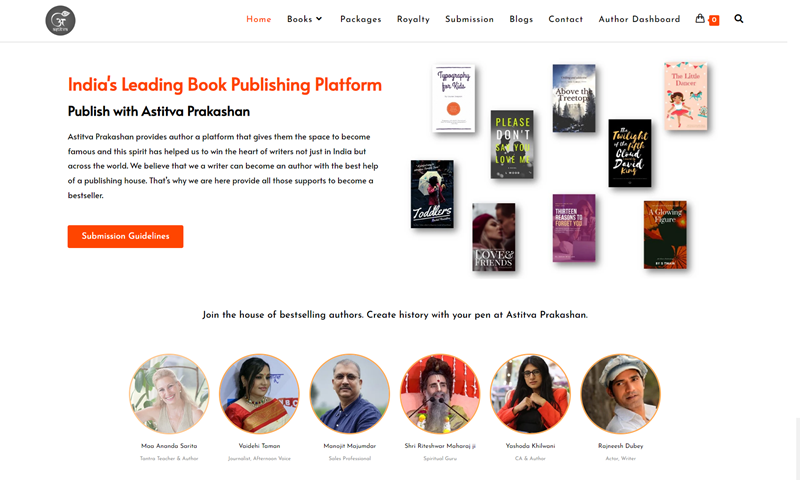Are you ready to share your story with the world but don’t know where to start? Choosing the right self-publishing platform can make all the difference in how easily your book reaches readers and how much control you have over the process.
Whether you’re writing fiction, non-fiction, or anything in between, finding the best platform in India that fits your needs is key. You’ll discover top self-publishing options that help you publish quickly, keep your earnings, and connect with your audience. Keep reading to find the perfect platform that turns your writing dreams into reality.
Top Self Publishing Platforms
Self publishing helps authors share their work without a traditional publisher. It gives control over the book’s content, design, and sales. India has many platforms that help writers publish books easily.
These platforms offer tools to create, format, and sell books online. They also provide support for marketing and distribution. Choosing the right platform depends on your needs and goals.
Amazon Kindle Direct Publishing (kdp)
Amazon KDP is popular among Indian authors. It lets you publish eBooks and paperbacks quickly. You keep most of the royalties from sales. KDP offers global reach and easy setup.
Notion Press
Notion Press is an Indian platform for print and eBooks. It offers editing, design, and marketing services. Authors keep full rights and control over their books.
Pothi.com
Pothi.com supports print-on-demand and eBook publishing. It helps authors publish without upfront costs. Distribution options include online stores and bookstores.
Bluerose Publishers
BlueRose Publishers provide self publishing with author support. They offer editing, cover design, and distribution. Authors can choose packages based on their needs.
Juggernaut Books
Juggernaut Books focuses on mobile reading and digital publishing. It helps authors reach readers through apps. The platform supports multiple Indian languages.

Credit: blog.reedsy.com
Platform Features Comparison
Choosing the best self-publishing platform in India depends on many features. These features affect how easy it is to publish and sell your book. Comparing these features helps you pick the right platform for your needs.
Some platforms offer free services, while others charge fees. Some provide marketing help, and others focus on printing quality. Understanding these differences saves time and money.
Platform User Interface
A simple and clean user interface makes publishing faster. Platforms with easy navigation help beginners publish without stress. Look for dashboards that show sales and book status clearly. A smooth interface reduces errors in uploading files and setting prices.
Royalty Rates And Pricing
Royalty rates show how much authors earn per sale. Higher rates mean better earnings. Some platforms take a fixed fee per book sold. Others offer a percentage of the sale price. Check if the platform allows setting your book price freely.
Print And Ebook Options
Some platforms support both print and ebook formats. Print options include paperback and hardcover choices. Ebook formats usually cover popular types like EPUB and PDF. The availability of formats affects your reach to different readers.
Distribution Channels
Distribution means where your book is sold. Some platforms sell books only on their own store. Others distribute to Amazon, Flipkart, and local bookstores. Wider distribution increases your book’s visibility and sales chances.
Marketing And Promotional Tools
Marketing tools help promote your book to readers. Some platforms offer email campaigns and social media sharing. Others provide author pages and discount coupons. Good marketing features boost your book’s popularity.
Customer Support And Resources
Reliable customer support helps solve publishing issues. Some platforms offer live chat or phone support. Others provide detailed guides and FAQs. Quick help saves time and reduces frustration during publishing.
Cost And Pricing Models
Cost and pricing models vary across self-publishing platforms in India. Understanding these helps authors plan their budgets. Some platforms charge upfront fees. Others take a percentage from book sales. Some offer free services but with limited features.
Authors must weigh the benefits against the costs. Choosing the right model impacts overall earnings and reach. Here are common pricing models found in Indian self-publishing platforms.
Upfront Fees
Platforms with upfront fees ask for payment before publishing. The fee covers editing, design, and distribution. This model suits authors who want full control. The cost can range from a few thousand to tens of thousands of rupees. No commission is taken from book sales. Authors keep all their royalties after paying the fee.
Royalty Share
Some platforms charge no upfront fee. Instead, they take a percentage of each sale. This model lowers initial costs for authors. The percentage usually ranges between 10% and 30%. Authors earn less per book but avoid paying before sales. Ideal for those with limited budgets or testing the market.
Hybrid Models
Hybrid pricing mixes upfront fees and royalty shares. Authors pay a smaller upfront fee plus a cut from sales. This model balances risk and reward. It often includes added services like marketing or print copies. Useful for authors who want some support without high upfront costs.
Free Publishing Options
Free platforms let authors publish at no cost. They offer basic tools and wide distribution. Earnings come only from royalties. Services like editing or cover design may cost extra. Best for beginners or those with tight budgets. Limited features may affect book quality and sales.
Distribution And Reach
Distribution and reach are key to a book’s success. A great book needs to be available to many readers. Self-publishing platforms in India vary in how they handle this. Some focus on digital reach, while others offer print and global distribution. Understanding these differences helps authors choose the right platform.
Digital Distribution Networks
Most Indian self-publishing platforms connect books to popular online stores. These include Amazon, Flipkart, and Google Play Books. This helps authors reach readers across India and abroad. E-books can be downloaded instantly by readers. This fast delivery increases book sales.
Print Book Availability
Some platforms provide print-on-demand services. This means books are printed only after an order. It cuts down costs for authors and avoids unsold stock. Print books reach readers who prefer physical copies. Some platforms also partner with local bookstores for wider distribution.
International Reach
Platforms with international ties help Indian authors reach global readers. Books get listed on global sites like Amazon Kindle and Apple Books. This expands the author’s audience beyond India. It also helps tap into markets with large Indian communities.
Marketing And Promotion Support
Certain platforms offer marketing tools to boost book visibility. Authors get access to email campaigns, social media promotions, and book listing features. These tools increase the chance of reaching more readers. Good marketing support can improve overall book sales.
Royalty And Earnings
Understanding royalty and earnings is key for authors choosing a self-publishing platform in India. Royalties determine how much money authors earn from each book sale. Earnings depend on the royalty rate and the platform’s pricing rules.
Many platforms offer different royalty percentages. Some pay up to 70% of the book’s sale price. Others may offer less but provide extra services like marketing or print options. Knowing these details helps authors pick the best platform for their needs.
Royalty Rates On Popular Platforms
Amazon Kindle Direct Publishing (KDP) offers royalties between 35% and 70%. The 70% rate applies to books priced between ₹99 and ₹2,499. Outside this range, the royalty is 35%. Authors must meet certain conditions to earn the higher rate.
Notion Press pays royalties up to 70%. The exact rate depends on the book’s price and format. They also provide print-on-demand services, which affect earnings.
Payment Frequency And Methods
Most Indian self-publishing platforms pay royalties monthly or quarterly. Payments happen after reaching a minimum threshold. Common payment methods include bank transfer and PayPal. Authors should check these details before publishing.
Impact Of Pricing On Earnings
Setting the right price affects royalty earnings. Higher prices mean higher royalties per sale but can reduce sales volume. Lower prices may boost sales but lower per-book earnings. Authors must balance price and demand carefully.
Additional Costs That Affect Earnings
Some platforms charge fees for services like editing, cover design, or marketing. These costs reduce the author’s overall profit. Reading the platform’s fee structure helps avoid surprises.

Credit: thepennymatters.com
User Experience And Support
User experience and support are key factors in choosing a self-publishing platform. A smooth, easy-to-use interface helps authors focus on their work. Strong customer support solves problems quickly and guides new users.
Good platforms provide clear steps for publishing books. They avoid confusion and reduce errors. Fast, friendly support answers questions and fixes issues. This builds trust and confidence for authors.
User-friendly Interface
The best platforms offer simple layouts. Menus and buttons are easy to find. Uploading manuscripts and covers is straightforward. Authors spend less time learning and more time creating.
Responsive Customer Support
Reliable support teams respond quickly. They use email, chat, or phone. Clear answers help authors solve problems fast. Support staff understand publishing needs and challenges.
Guidance For New Authors
Some platforms provide tutorials and FAQs. Step-by-step guides explain the publishing process. Authors gain confidence and avoid mistakes. This support is important for beginners.
Technical Stability And Speed
Fast, stable platforms prevent frustration. Pages load quickly and tools work smoothly. Technical issues are rare and fixed fast. This keeps the publishing process stress-free.
Tips For Choosing Platforms
Choosing the right self-publishing platform is key for every author. Each platform offers different tools, costs, and reach. Picking the best fit can save time and increase book sales.
Consider your needs carefully. Think about your budget, target readers, and the platform’s ease of use. This helps narrow down the options to the best one.
Check Publishing Costs And Royalties
Know all fees involved in publishing. Some platforms charge upfront fees. Others take a percentage of your sales. Understand how royalties work to keep more earnings.
Evaluate Distribution Reach
Find out where the platform sells your book. Some cover only India, while others reach global markets. Wider distribution means more readers and better chances of success.
Look For User-friendly Tools
Choose platforms with easy-to-use interfaces. Simple upload processes save time. Look for editing and formatting support. Good tools help create a professional book.
Read Reviews And Author Feedback
Check what other authors say about the platform. Real experiences reveal strengths and weaknesses. Avoid platforms with poor customer service or hidden costs.
Consider Marketing Support
Some platforms offer marketing help. This can include promotions, social media sharing, or advertising options. Marketing support boosts your book’s visibility.

Credit: www.theliteraturetimes.com
Frequently Asked Questions
What Are The Top Self-publishing Platforms In India?
KDP, Notion Press, Pothi, and PublishDrive are popular platforms used by Indian authors.
How Much Does Self-publishing Cost In India?
Most platforms offer free publishing; some charge for extra services like editing or marketing.
Can Indian Authors Publish Both Ebooks And Print Books?
Yes, many platforms support both digital eBooks and physical print-on-demand books.
How Long Does It Take To Publish A Book Online In India?
Publishing can take from a few hours to a few days, depending on the platform.
Do Self-publishing Platforms In India Help With Book Marketing?
Some platforms offer marketing tools, but authors should also promote their books independently.
What Royalties Do Indian Authors Earn From Self-publishing?
Royalties usually range from 35% to 70%, depending on the platform and book price.
Is Isbn Required For Self-publishing In India?
An ISBN is needed for print books; some platforms provide it for free or for a fee.
Conclusion
Choosing the right self-publishing platform matters a lot for authors in India. Each platform offers different tools and benefits. Think about your needs, budget, and goals before deciding. Self-publishing can help you share your story with many readers. Take your time to explore options carefully.
Start your publishing journey with confidence and clear plans. Your book deserves the best chance to succeed. Keep writing and keep believing in your work.